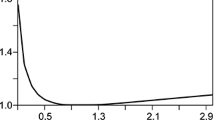The traditional method for choosing the kernel function blur coefficients in nonparametric regression is based on minimizing the root mean square error in the approximation of the desired dependence on the initial statistical data. With an increase in the volume of the training sample of the values of the variables of the restored dependence, the computational costs in optimizing nonparametric regression increase significantly. An unconventional method is proposed for choosing the blur coefficients of nonparametric regression that are optimal for the kernel probability densities of the variables of the reconstructed dependence. Statistical estimates of the root mean square deviations of the joint probability density of the variables of the reconstructed dependence were used as an optimality criterion in choosing the blur coefficients of the kernel probability densities. The proposed technique made it possible to avoid the calculation of the approximation error of the restored dependence by nonparametric regression, which was confirmed by the results of computational experiments. The results obtained make it possible to use the method of fast optimization of kernel estimates of probability densities in the synthesis of nonparametric regression.
Similar content being viewed by others
References
I. V. Zenkov, A. V. Lapko, V. A. Lapko, et al., “Nonparametric algorithm for automatic classification of large volume multidimensional statistical data and its application,” Komp. Optika, 45, No. 2, 253–260 (2021), https://doi.org/10.18287/2412-6179-CO-801.
A. V. Lapko and V. A. Lapko, Optoelectr., Instrum. Data Proc., 46, No 1, 56–63 (2010), https://doi.org/10.3103/S8756699010010073.
A. G. Varzhapetyan and E. Yu. Mikhailova, “Methods for choosing the defining characteristics of nonparametric algorithms for identifying reliability models of complex systems based on operational data,” Vopr. Kibern., Iss. 094, Stat. Metody Teor. Obesp. Ekspluat., S. F. Levin (ed.), AN SSSR, Moscow (1987), pp. 77–87.
B. W. Silverman, Density Estimation for Statistics and Data Analysis, Chapman and Hall, London (1986).
S. Sheather and M. Jones, J. R. Stat. Soc. Ser. B, 53, No. 3, 683–690 (1991), https://doi.org/10.1111/j.2517-6161.1991.tb01857.x.
S. J. Sheather, Stat. Sci., 19, No. 4, 588–597 (2004), https://doi.org/10.1214/088342304000000297.
G. R. Terrell and D. W. Scott, J. Am. Stat. Assoc., 80, 209–214 (1985), https://doi.org/10.2307/2288074.
M. C. Jones, J. S. Marron, and S. J. Sheather, J. Am. Stat. Assoc., 91, 401–407 (1996), https://doi.org/10.2307/2291420.
D. W. Scott, Multivariate Density Estimation: Theory, Practice, and Visualization, Wiley, New York (1992).
A. V. Lapko and V. A. Lapko, Measur. Techn., 63, No. 11, 856–861 (2021), https://doi.org/10.1007/s11018-021-01873-w.
A. V. Lapko and V. A. Lapko, Measur. Techn., 64, No. 1, 13–20 (2021), https://doi.org/10.1007/s11018-021-01889-2.
A. V. Lapko and V. A. Lapko, Measur. Techn., 62, No. 8, 665–672 (2019), https://doi.org/10.1007/s11018-019-01676-0.
W. Härdle, Applied Nonparametric Regression, Cambridge University Press (1990).
E. A. Nadaraya, “Nonparametric estimates for curved regression,” Tr. AN SSSR (1965), Iss. 5, pp. 56–68.
M. Rudemo, “Empirical choice of histograms and kernel density estimators,” Scand. J. Stat., No. 9, 65–78 (1982).
A. W. Bowman, J. Stat. Comp. Simul., 21, 313–327 (1985), https://doi.org/10.1080/00949658508810822.
P. Hall, Ann. Stat., 11, No. 4, 1156–1174 (1983), https://doi.org/10.1214/aos/1176346329.
A. V. Lapko and V. A. Lapko, Measur. Techn., 60, No. 6, 515–522 (2017), https://doi.org/10.1007/s11018-017-1228-x.
V. E. Gmurman, Probability Theory and Mathematical Statistics, Vysshaya Shkola, Moscow (1999).
V. A. Epanechnikov, Theory of Probability & Its Applications, 14, No. 1, 153–158 (1969), https://doi.org/10.1137/1114019.
Author information
Authors and Affiliations
Corresponding author
Additional information
Translated from Izmeritel’naya Tekhnika, No. 2, pp. 3–7, February, 2022.
Rights and permissions
Springer Nature or its licensor holds exclusive rights to this article under a publishing agreement with the author(s) or other rightsholder(s); author self-archiving of the accepted manuscript version of this article is solely governed by the terms of such publishing agreement and applicable law.
About this article
Cite this article
Lapko, A.V., Lapko, V.A. An Unconventional Technique for Choosing the Kernel Function Blur Coefficients in Nonparametric Regression. Meas Tech 65, 83–88 (2022). https://doi.org/10.1007/s11018-022-02053-0
Received:
Accepted:
Published:
Issue Date:
DOI: https://doi.org/10.1007/s11018-022-02053-0




